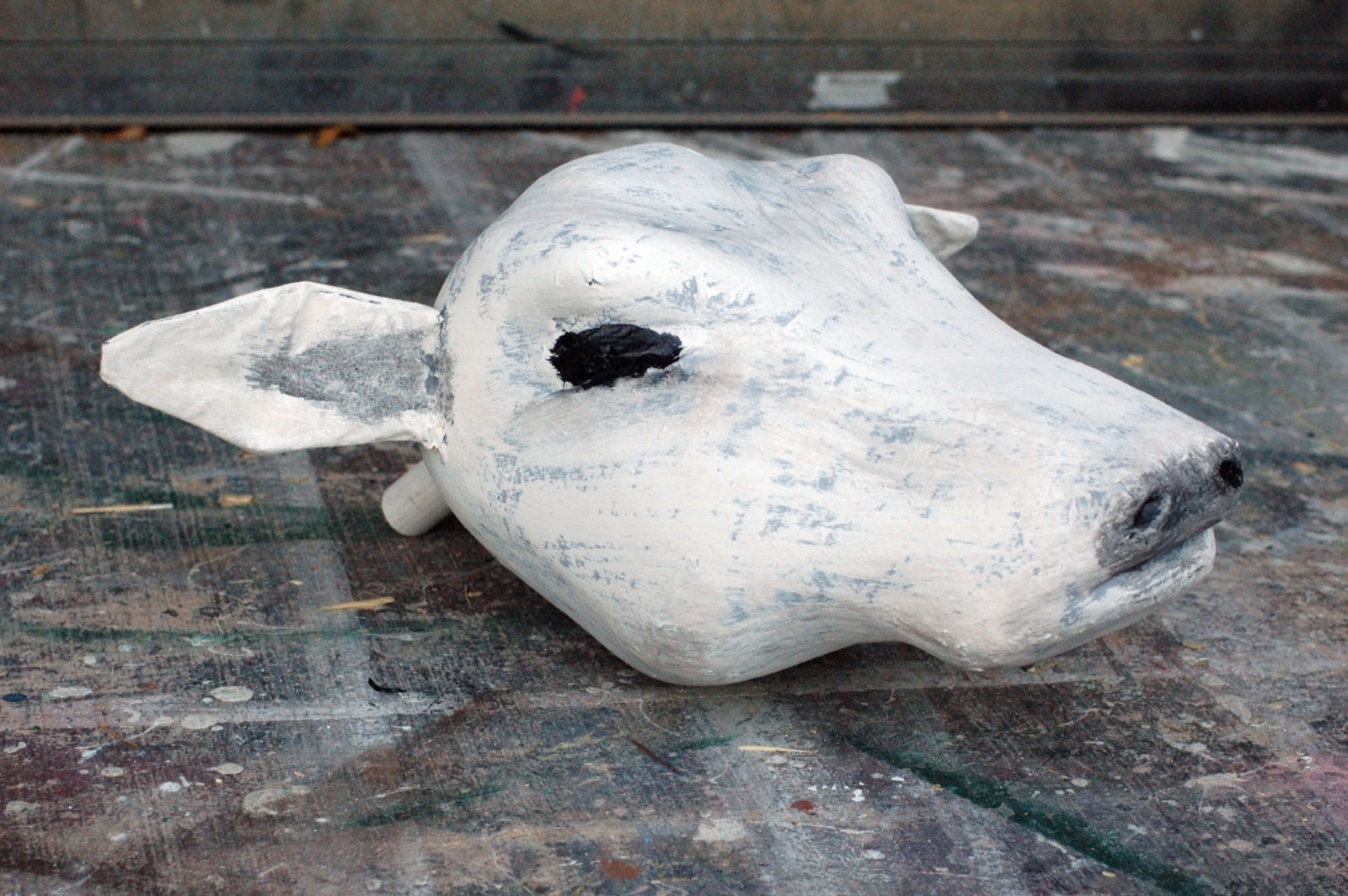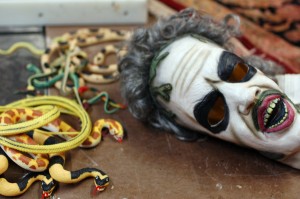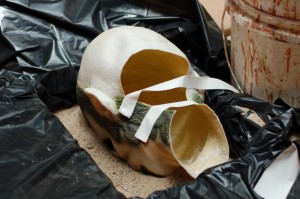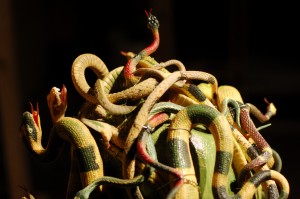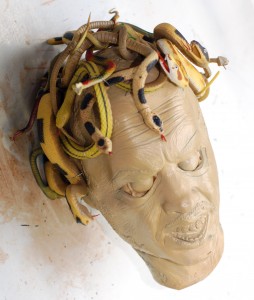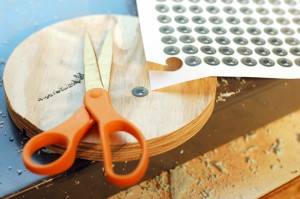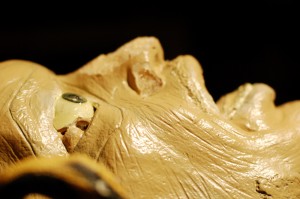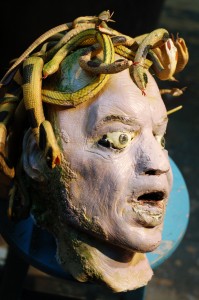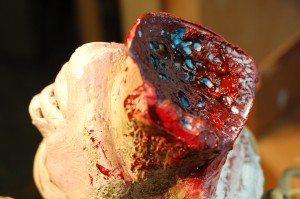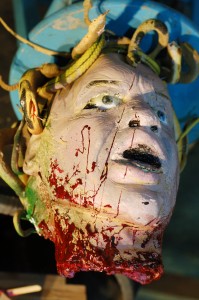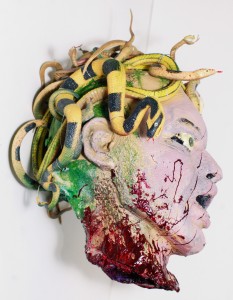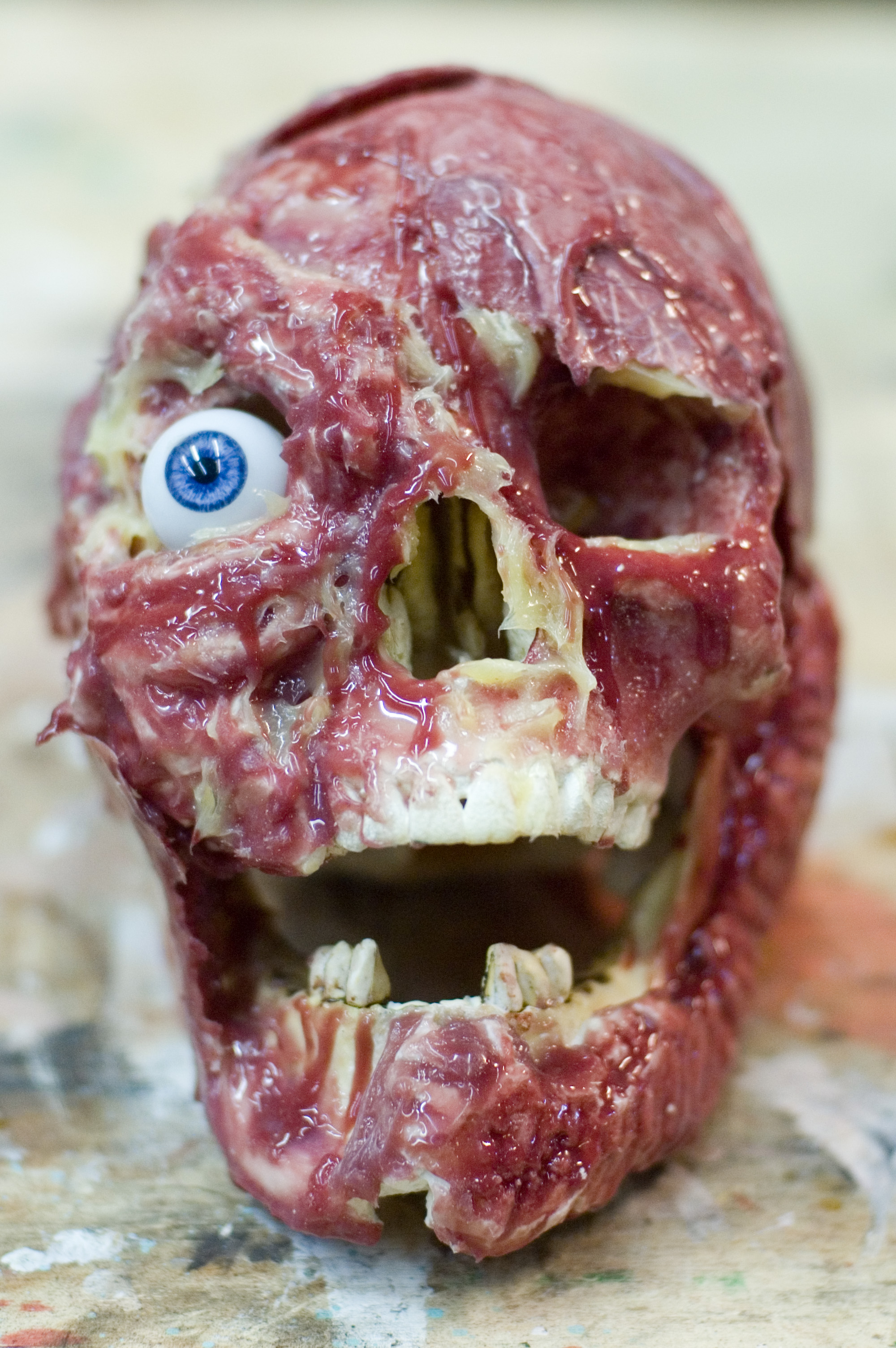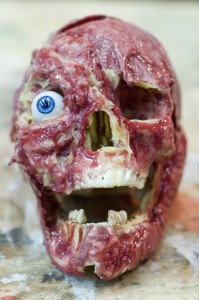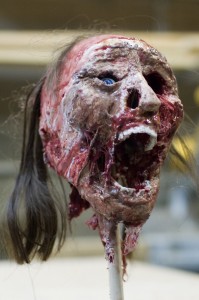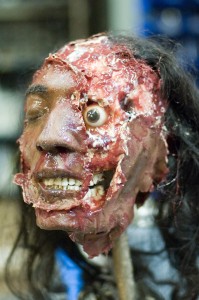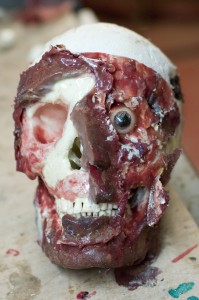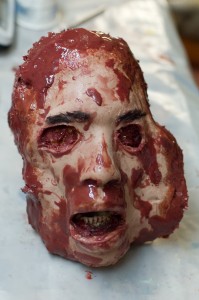I recently finished some work on a production of Into the Woods at Elon University. The students hired me to build the animals (some may call them puppets). Milky the Cow is one of the main animals, appearing in many of the scenes. I began by sculpting a cow head in white foam.
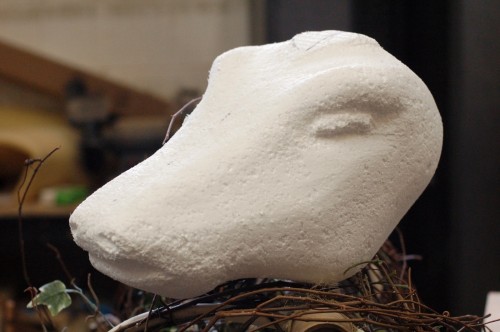
I gave the head a coating of papier-mâché. The design of the show used a lot of found object and natural material arranged to suggest a forest, rather than attempting a realistic portrayal of one. So the construction of the head proceeded in a manner to highlight the fact that it was a handmade object, rather than attempting to completely mimic an actual cow’s head.
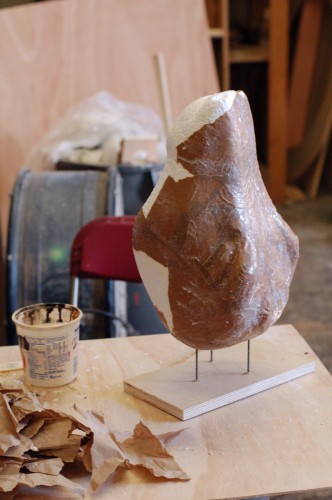
The body was a separate piece; it was just the torso, tail and udder, without any legs. They were basing their design off of the Regent’s Park production (which transferred to the Public Theater this past summer, though I left just before it came).
I started with a structure made of a cardboard tube “spine” and some bent PVC pipe to define the shape. I than began wrapping vines around to create the outer surface. Everything was wired in place, but I also added some twine to make it appear as though it was lashed together.
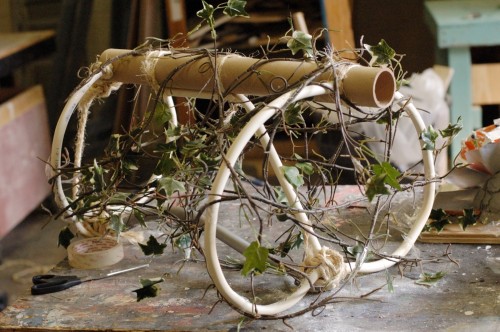
Next for the head were some ears. I patterned and sewed them out of muslin, with a piece of styrene inside to give it some stiffness. Once the ears were on the head, I heated them with a hot air gun so I could curl and shape them. When cool, the styrene retained that shape.
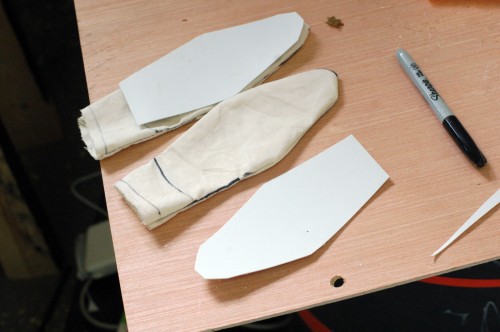
The head got a coat of grey primer, followed by a dry brush of off-white over top. I glued a dowel coming out of the back of the head so the handler could hold onto it and manipulate it around.
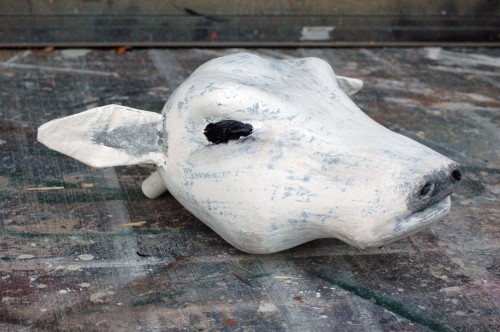
The udder was a few pieces of red fabric which I patterned, sewed, and stuffed with polyester batting. I lined the inside of the body with some screen material so the actors could throw objects inside as Milky “ate” them, and they would be easy to retrieve after the show. I added some raffia to beef out the body since the vines did not give enough coverage on their own.
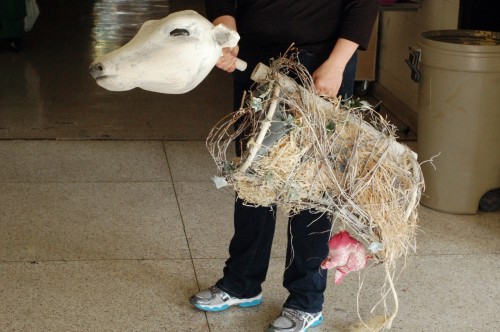
So there you have it; one Milky the Cow!

